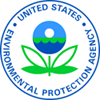Newsroom
All News Releases By Date
Results of Soil Sampling at Route 66 State Park near Eureka, Mo., Show No Significant Health Risks for Park Visitors, Workers
Release Date: 11/19/2012
Contact Information: Chris Whitley, 913-551-7394, [email protected]
Environmental News
FOR IMMEDIATE RELEASE
 (Lenexa, Kan., Nov. 19, 2012) - EPA Region 7 has concluded after considering new soil sampling data and new toxicity information for dioxin that the cleanup conducted in the 1990s at the Route 66 State Park near Eureka, Mo., remains protective of human health and the park's current uses can continue.
(Lenexa, Kan., Nov. 19, 2012) - EPA Region 7 has concluded after considering new soil sampling data and new toxicity information for dioxin that the cleanup conducted in the 1990s at the Route 66 State Park near Eureka, Mo., remains protective of human health and the park's current uses can continue.
Dioxin soil sampling in June 2012, conducted at the request of the Missouri Department of Natural Resources (MDNR), which owns the park, confirms that park visitors and employees are not being exposed to significant health risks. The sampling was part of an EPA Region 7 study to apply newly developed science to test for very small, or trace, amounts of dioxin in soil at the park.
“This is good news for the thousands of people who visit Route 66 State Park each year, and good news for the state employees and others who earn their living there,” EPA Region 7 Administrator Karl Brooks said. “It confirms that the work EPA and MDNR did in the 1990s to clean up this site continues to provide a safe recreational area for the public.”
Route 66 State Park was established by the State of Missouri in 1999 at the former town site of Times Beach, Mo., following a dioxin cleanup by EPA and MDNR. During the 1990s cleanup, soils containing dioxin above 1,000 parts per trillion (ppt) were excavated and replaced with clean backfill. This summer’s testing used more advanced methods than those used as part of the 1990s cleanup of Times Beach, including EPA’s new dioxin toxicity criterion, which was finalized in February 2012.
For the June 2012 sampling at Route 66 State Park, EPA collected surface soils from a variety of representative locations, including trails, shelters, picnic areas, the playground, the proposed location for an off-leash dog park, underground utility line installation areas, former roadways and residential lots, and two outfalls near the Meramec River.
“EPA Region 7’s risk assessors carefully analyzed the results from all of these samples and applied the new science,” Brooks said. “EPA considered multiple factors, including the frequency and duration of an individual’s time spent at the park, to make these calculations.”
Health experts from the federal Agency for Toxic Substances and Disease Registry have reviewed and agree with EPA Region 7’s analysis and conclusions.
Since the late 1980s, the federal government has employed a successful coordinated strategy across the country to reduce industrial dioxin emission levels and has performed cleanups at known dioxin-contaminated sites, including the former Times Beach site. Over the years, EPA’s scientific knowledge about dioxin, as well as technologies and strategies for addressing dioxin contamination, has evolved.
Dioxins are a family of structurally similar toxic chemicals. Most dioxins are not intentionally produced, but are the byproducts of chemical processing or burning. The dioxins that exist in very small traces today at Route 66 State Park were introduced to the area’s soil in the early 1970s when waste oil containing high levels of dioxin was sprayed on the streets of Times Beach as a means of dust control.
EPA has identified a dioxin soil level of 640 ppt as protective for Route 66 State Park visitors and a level of 660 ppt soil dioxin as protective for park workers conducting maintenance, operational and landscaping activities.
Results of EPA’s June 2012 sampling activity at Route 66 State Park, and a report of the Agency’s analysis and conclusions, are available online.
Learn more about dioxin
Learn more about Route 66 State Park
Locate this and other Region 7 news items on the News Where You Live interactive map
Connect with EPA Region 7 on Facebook: www.facebook.com/eparegion7
 View selected historical press releases from 1970 to 1998 in the EPA History website.
View selected historical press releases from 1970 to 1998 in the EPA History website.

